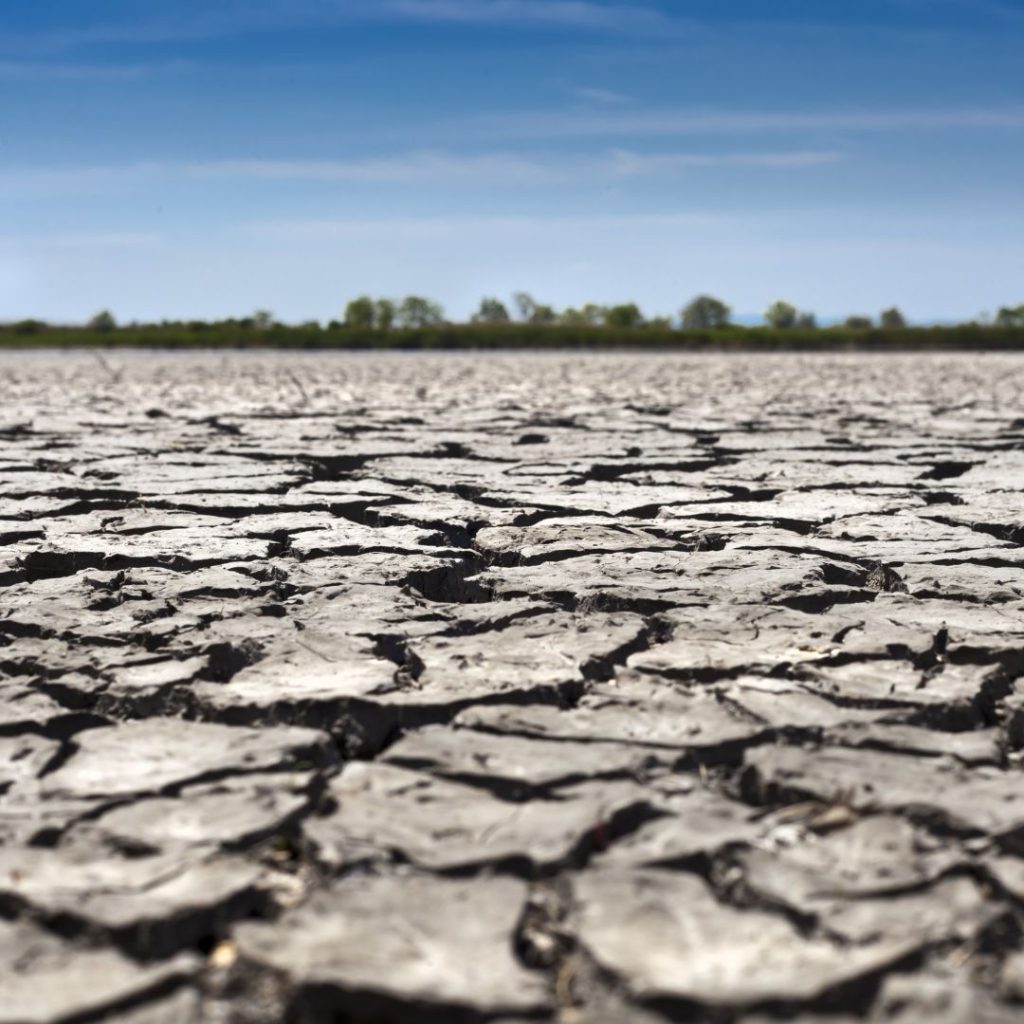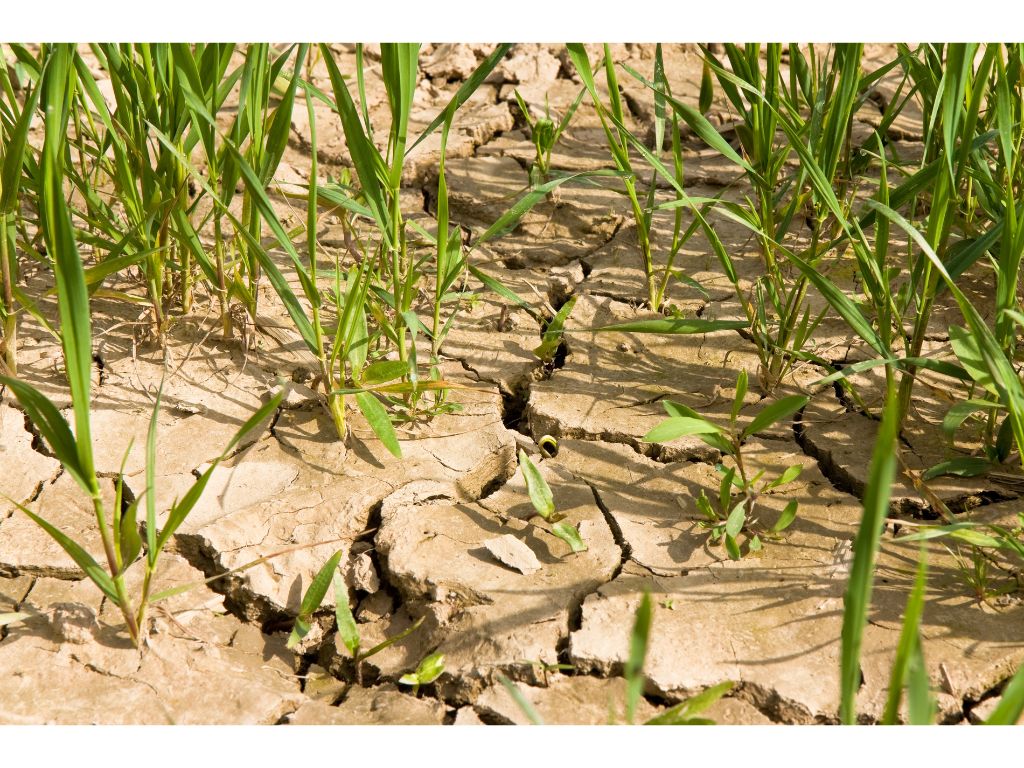Alarming WMO report: Climate change indicators reached record levels in 2023

The state of the climate in 2023 gives the phrase "out of joint" a new, ominous meaning and is a cause for great concern, according to the World Meteorological Organization (WMO). Following the European meteorological service Copernicus, which issued a similar report for Europe a few weeks ago, the WMO yesterday published a report showing that records were broken again in 2023, and in some cases even exceeded, for greenhouse gas levels, surface temperatures, oceanic warmth and acidification, sea level rise, loss of Antarctic sea ice and glacier retreat.

WMO Secretary-General Celeste Saulo spoke of a "red alert" at the publication of the 2023 report on the world's climate, which has already been quoted in many media. In today's post, we stick to what the report says and provide an overview of the key findings.
"Never before have we been so close – albeit temporarily – to the lower limit of 1.5°C of the Paris Agreement on climate change," said WMO Secretary-General Celeste Saulo. "The WMO community is sounding the alarm around the world."
The problem is well known, and we urgently need to step up our global efforts to mitigate the climate crisis. According to a research team from the Department of Economics at the WU School of Economics and Business, CO2 emissions worldwide will increase significantly by 2050 without drastic changes. Her article was published in the journal "Communications, Earth & Environment".
A brief summary of the report's key messages
- The report on the state of the world's climate confirms that 2023 will be by far the warmest year in history
- Records for ocean warming, sea level rise, loss of Antarctic sea ice and retreat of glaciers
- Extreme weather undermines socio-economic development
- Transition to renewable energy gives hope
- The cost of inaction on climate change mitigation is higher than the cost of action on climate change mitigation
Heat waves, floods, droughts, wildfires and rapidly intensifying tropical cyclones caused misery and chaos that turned everyday life upside down for millions of people and caused many billions of dollars in economic losses, according to the WMO's State of Global Climate 2023 report.

Warmest year and decade
The WMO report confirmed that 2023 was the warmest year on record, with a global average surface temperature of 1.45°Celsius (with an uncertainty margin of ± 0.12°C) above the pre-industrial baseline. At the same time, the last decade has been the warmest on record.
"The sirens are sounding for all the important indicators: some records are not only at the top of the charts, but are literally breaking them. And the changes are accelerating."
UN Secretary-General António Guterres
All-encompassing effects of climate change

"Climate change affects much more than just temperatures. What we have experienced in 2023, especially with unprecedented ocean warmth, glacier retreat and loss of Antarctic sea ice, is particularly concerning."
WMO Secretary-General Celeste Saulo
Greenhouse gases
Observed concentrations of the three main greenhouse gases – carbon dioxide, methane and nitrous oxide – reached record levels in 2022. Real-time data from specific locations shows another increase in 2023.
The CO2 content is 50% higher than in pre-industrial times and stores heat in the atmosphere. The long lifespan of CO2 means that temperatures will continue to rise for many years to come.
One-third of all marine ecosystems damaged
On an average day in 2023, nearly one-third of the global ocean was affected by a marine heat wave that damaged vital ecosystems. By the end of the year, over 90% of the ocean had experienced heatwave conditions at some point in the year.

Greatest glacial ice loss
Globally, glaciers suffered the largest ice loss since records began (since 1950), due to extreme melting in both North America and Europe, according to preliminary data.
Sea ice at record low
The extent of Antarctic sea ice was by far the lowest on record, with the maximum extent at the end of winter 1 million km2 below the previous year's record year – equivalent to the size of France and Germany combined.

Sea level rise
In 2023, the global mean sea level reached a record in satellite record (since 1993), reflecting the continued warming of the oceans (thermal expansion) as well as the melting of glaciers and ice sheets.
The rate of global mean sea level rise over the past decade (2014–2023) is more than double the rate of sea level rise in the first decade of the satellite record (1993–2002).
Extreme weather and climate events

Extreme weather and climate events have had significant socio-economic impacts on all inhabited continents. These included major flooding, tropical cyclones, extreme heat and drought, and associated wildfires.
Hurricanes
Flooding combined with extreme rainfall caused by Mediterranean Cyclone Daniel hit Greece, Bulgaria, Turkey and Libya, with a particularly large number of people dying in Libya in September.
Tropical Cyclone Freddy in February and March was one of the longest-lasting tropical cyclones in the world, having a significant impact on Madagascar, Mozambique and Malawi.
May's Tropical Cyclone Mocha was one of the strongest cyclones ever observed in the Bay of Bengal, causing 1.7 million displacements across the sub-region from Sri Lanka to Myanmar and across India and Bangladesh, exacerbating acute food insecurity.
Hurricane Otis strengthened into a Category 5 system in a matter of hours – one of the fastest amplification rates in the satellite era. It hit the Mexican coastal town of Acapulco on October 24, causing an estimated $15 billion in economic losses and killing at least 47 people.
Extreme heat, drought and flooding
The Horn of Africa region, which has been drought-stricken for a long time, experienced significant flooding in 2023, especially later in the year. The floods displaced 1.8 million people in Ethiopia, Burundi, South Sudan, Tanzania, Uganda, Somalia and Kenya, in addition to the 3 million people displaced within the country or across borders by the five consecutive droughts in Ethiopia, Kenya, Djibouti and Somalia.
Extreme heat affected many parts of the world. It was strongest in southern Europe and North Africa, especially in the second half of July. Temperatures in Italy reached 48.2 °C, and record temperatures were recorded in Tunis (Tunisia) at 49.0 °C, in Agadir (Morocco) at 50.4 °C and in Algiers (Algeria) at 49.2 °C.

Socio-economic consequences
"The climate crisis is THE defining challenge facing humanity and is closely linked to the inequality crisis – as evidenced by growing food insecurity and population displacement, as well as biodiversity loss."
WMO Secretary-General Celeste Saulo
The number of people suffering from acute food insecurity worldwide has more than doubled: from 149 million people before the COVID-19 pandemic to 333 million people in 2023 (in 78 countries monitored by the World Food Programme). According to the report, while weather and climate extremes are not the root cause, they are exacerbating factors.
Weather-related hazards continued to trigger displacement in 2023, showing how climate shocks are undermining resilience and creating new protection risks for the most vulnerable populations.

However, there is a glimmer of hope.
Highest increase in renewable energies
Renewable energy production, driven primarily by the dynamic forces of solar radiation, wind and the water cycle, has come to the forefront of climate action due to its potential to meet decarbonisation targets. In 2023, the addition of renewable energy increased by almost 50% compared to 2022 to a total of 510 gigawatts (GW) – the highest rate observed in the last two decades.
There is a large funding gap
In 2021/2022, global climate-related financial flows reached nearly $1.3 trillion, almost doubling compared to 2019/2020 levels. Yet, tracked climate finance flows account for only about 1% of global GDP, according to the Climate Policy Initiative.
There is a large funding gap. In an average scenario, the Paris target of 1.5°C would require annual investment in climate finance to grow more than sixfold , reaching nearly $9 trillion by 2030 and another $10 trillion by 2050.

The cost of inaction is even higher
The total cost of inaction for the period from 2025 to 2100 is estimated at $1.266 trillion; this is the difference between losses under a normal business scenario and those incurred under a 1.5°C pathway. However, this number is probably a dramatic underestimate.
Funding for adaptation measures remains inadequate. Although adaptation financing reached an all-time high of $63 billion in 2021/2022, the global financing gap for adaptation measures continues to widen, falling far short of the estimated $212 billion per year by 2030 in developing countries alone.
Global temperature records in July are due to climate change






